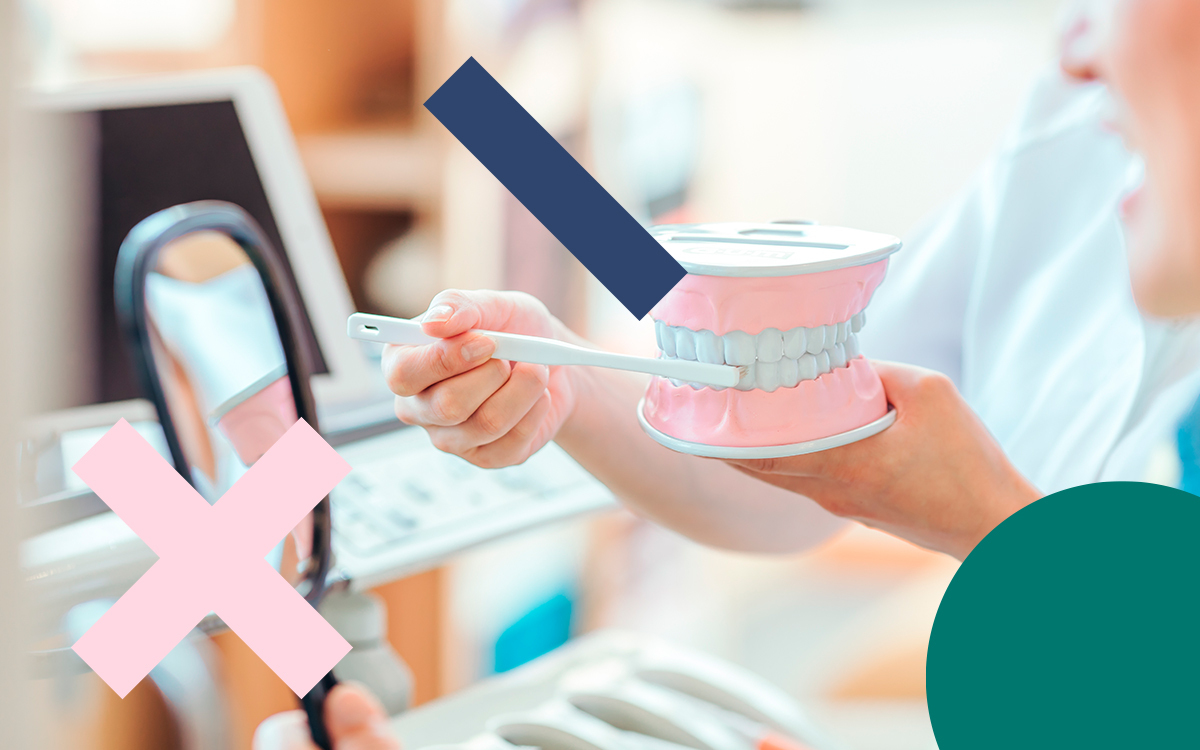 Oral health
Oral health
How to keep your breath fresh?
Halitosis or bad breath is known as the set of unpleasant odors that emerge from the oral cavity. This is a fairly common problem in...

Halitosis, or more colloquially called bad breath, is a problem that occurs more frequently among older people, although it can also affect younger people, especially due to poor diet. It is a disorder that can cause problems from the point of view of interpersonal relationships due to fear of making the interlocutor uncomfortable.
Factors contributing to the overgrowth of halitosis-causing bacteria include reduced salivary flow (e.g., due to parotid disease, Sjögren's syndrome or the use of anticholinergic drugs), salivary stagnation and increased salivary pH.
The term halitosis, or simply bad breath, refers to the unpleasant odor emitted when breathing through the mouth; it is a disorder that can affect anyone, although the problem occurs more frequently with increasing age.
From a social point of view, it is a problem that can cause great embarrassment in those affected, to the point of jeopardizing interpersonal relationships for fear of inducing discomfort in their interlocutor; there is also a disorder in which the patient is constantly afraid of suffering from bad breath, despite the unfoundedness of the thought (halitophobia).
It is estimated that 50% of the population suffers from halitosis more or less systematically and the most common cause is undoubtedly insufficient oral hygiene (probably around 90% of cases), but in certain situations there are different reasons that should be addressed with the help of a physician.
Halitosis can be effectively treated if the cause is correctly diagnosed, which is pursued by means of a detailed clinical examination. In many cases, the patient's treatment simply consists of regular oral hygiene and periodic dental hygiene.
The possible causes of bad breath are many and varied. In most cases, up to 90 %, the bad odor originates directly in the mouth, very often due to the accumulation of food residues that are transformed by the metabolism of the bacteria responsible for plaque, present due to insufficient oral hygiene on the teeth and tongue. It is also possible that the cause is a reduced hydration of the oral mucosa (xerostomia, i.e. dry mouth).
When the cause is not in the mouth, various diseases can cause halitosis:
More rarely, the cause of the disorder must be sought in certain specific substances:
There are also a number of concomitant causes that can aggravate the problem:
Generally, when halitosis is caused by the consumption of certain foods, the disorder is temporary and, when the consumption of the food is suspended, the unpleasant symptom disappears.
A special case of breath disorders is Low-carbohydrate diets which, by inducing a state of ketosis, are responsible for the typical fruity breath.
In almost 90% of cases, bad breath is due to causes that are also related to oral caries, such as the presence of decaying food, dead cells of the oral mucosa and microscopic traces of blood on the oral structures. As a result of a complex series of chemical reactions that occur between bacteria and these substrates present mainly on the back of the tongue, the unpleasant odor originates.
In fact, the surface of the tongue (along with the grooves of the gums) serves as an ideal habitat for the proliferation of bacteria that metabolize food residues and release volatile sulfur compounds responsible for bad odor.
Other bacterial settlements that may be responsible for malodor are found in interdental spaces, imperfect dental restorations, abscesses and poorly sanitized dentures / dental prostheses, but also in the vicinity of caries andgingival inflammations such as periodontitis, triggering a dangerous vicious circle that can lead to worsening of both halitosis and oral disorders.
Once the diagnosis of halitosis has been made and the cause identified, specific therapy can be prescribed to address and possibly resolve it.
Apart from this, the following remedies are recommended to treat a bad breath problem:
It is not always easy to evaluate breath, but a simple way is to lick the inside of the wrist with the back of the tongue and wait a few seconds for the saliva to dry, then evaluate the residual odor.
The most effective way is to lightly scrape the back of the tongue with a disposable plastic spoon and smell the drying residue.
Heavy breath in the morning is due to low saliva production during the night: this creates the ideal environment for bacteria to thrive.
To prevent the problem, proper oral hygiene should be maintained by brushing the teeth 3 times a day, the correct cleaning of the interdental space and the tongue. It is recommended to accompany these actions with the use of mint-flavored toothpastes and mouthwashes, which will provide additional freshness to the person. If halitosis persists, it is probably a symptom of some oral pathology or other disease. In these cases it is advisable to consult your dentist and physician.
 Oral health
Oral health
Halitosis or bad breath is known as the set of unpleasant odors that emerge from the oral cavity. This is a fairly common problem in...
 Oral health
Oral health
To achieve a complete oral hygiene, there are multiple brushing techniques that are highly effective. Depending on the preferences of each user, and adapting to the specific needs of each...
Factors that contribute to the overgrowth of halitosis-causing bacteria include reduced salivary flow (e.g., due to...